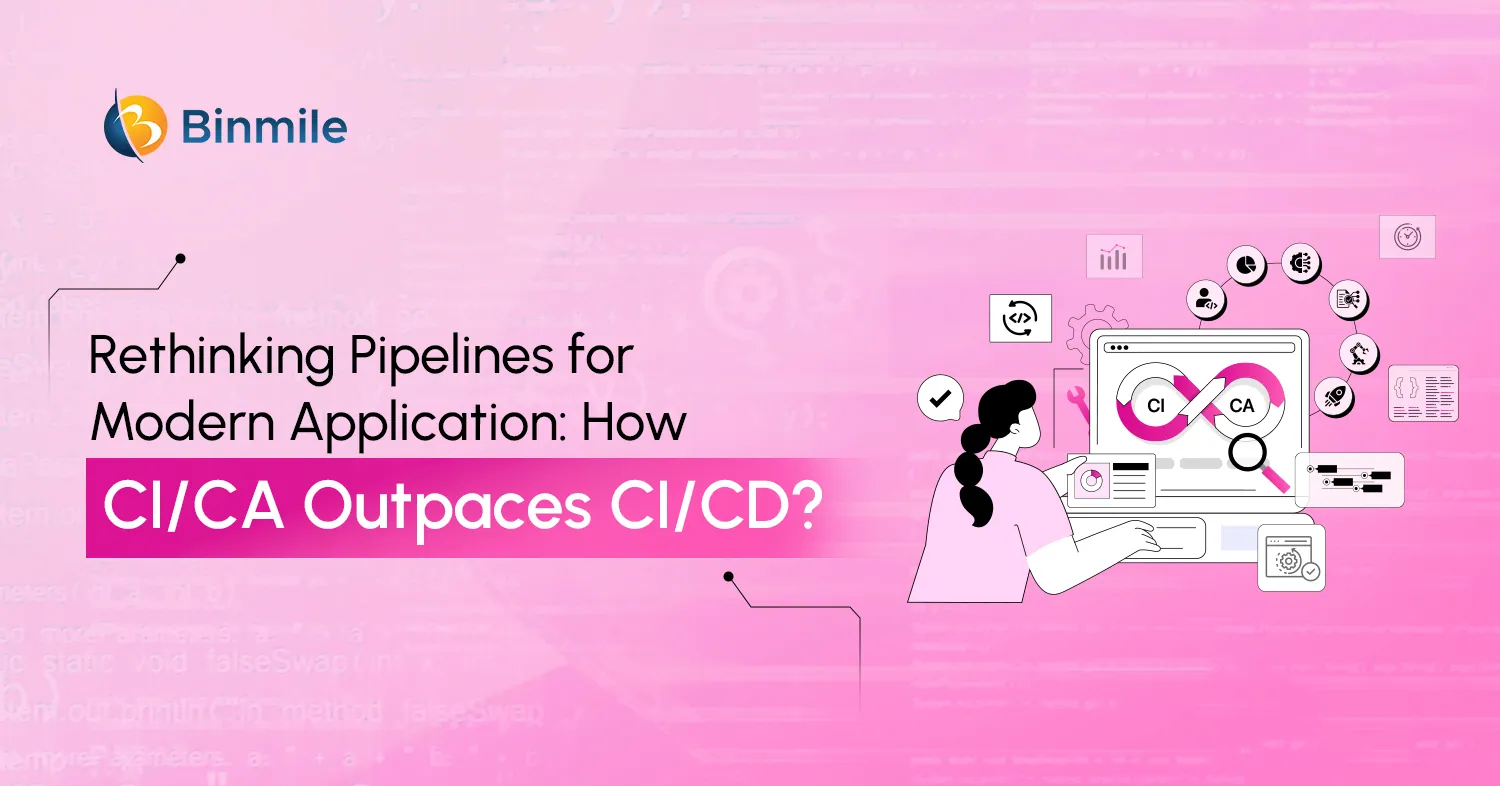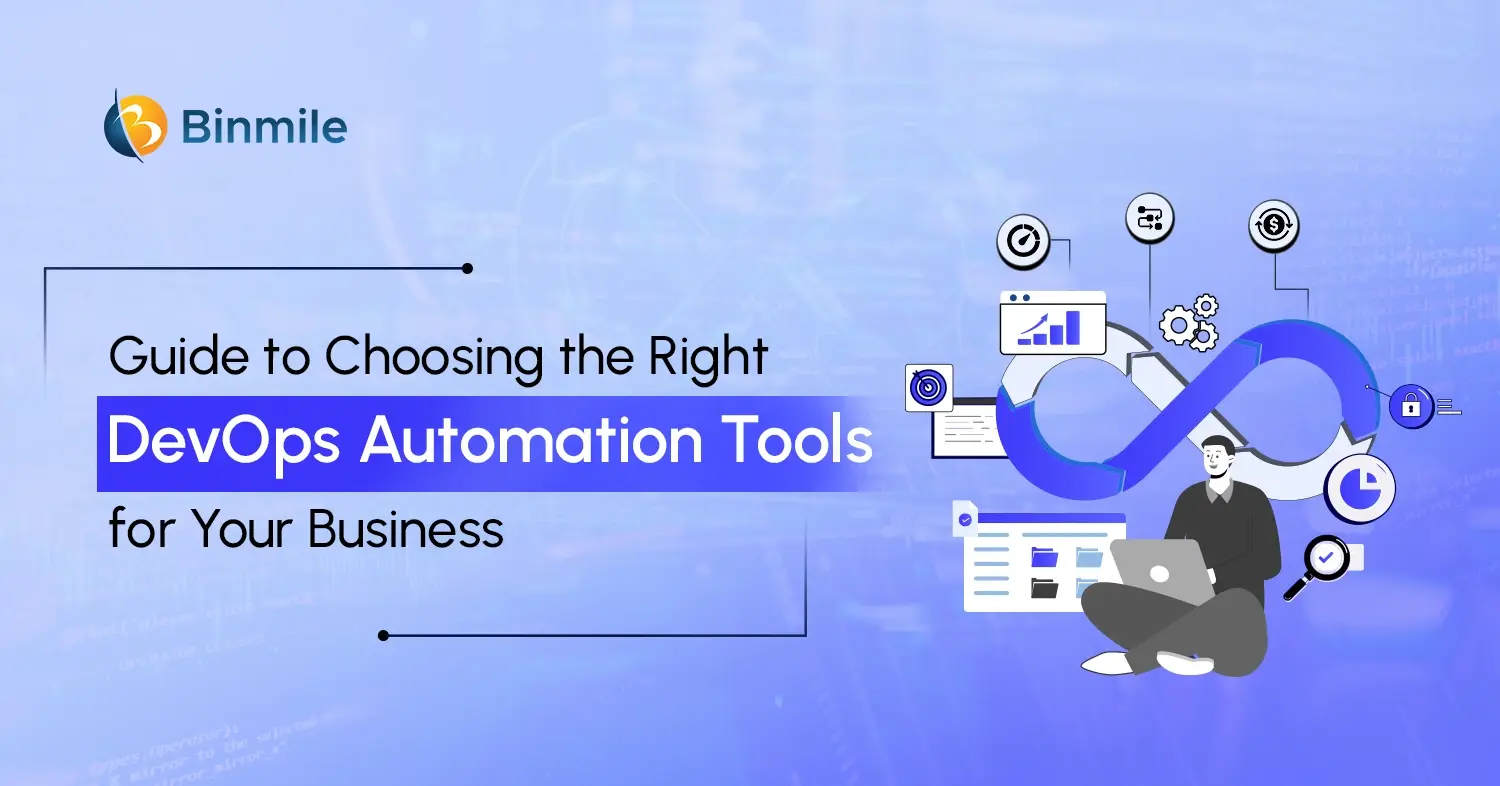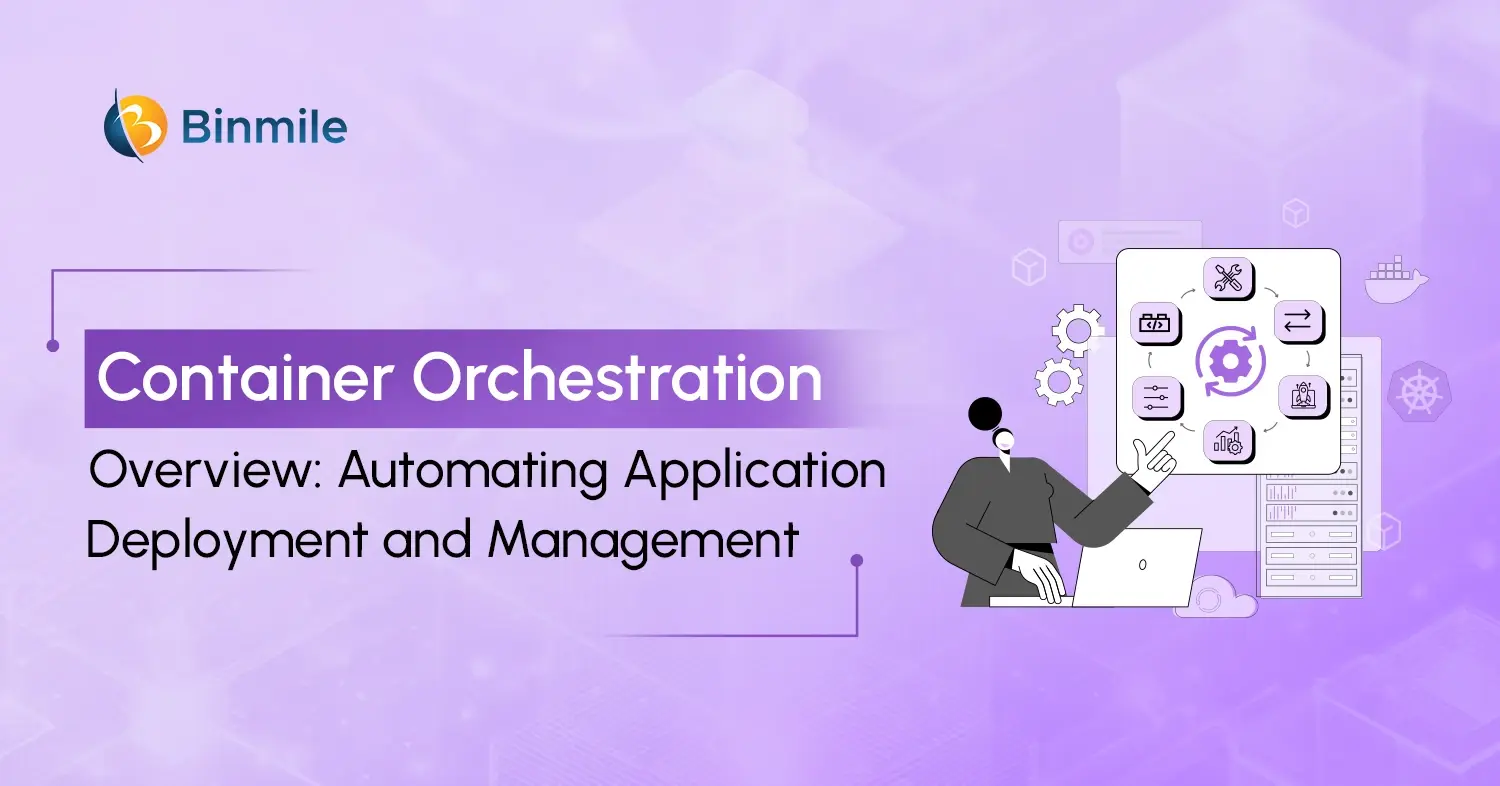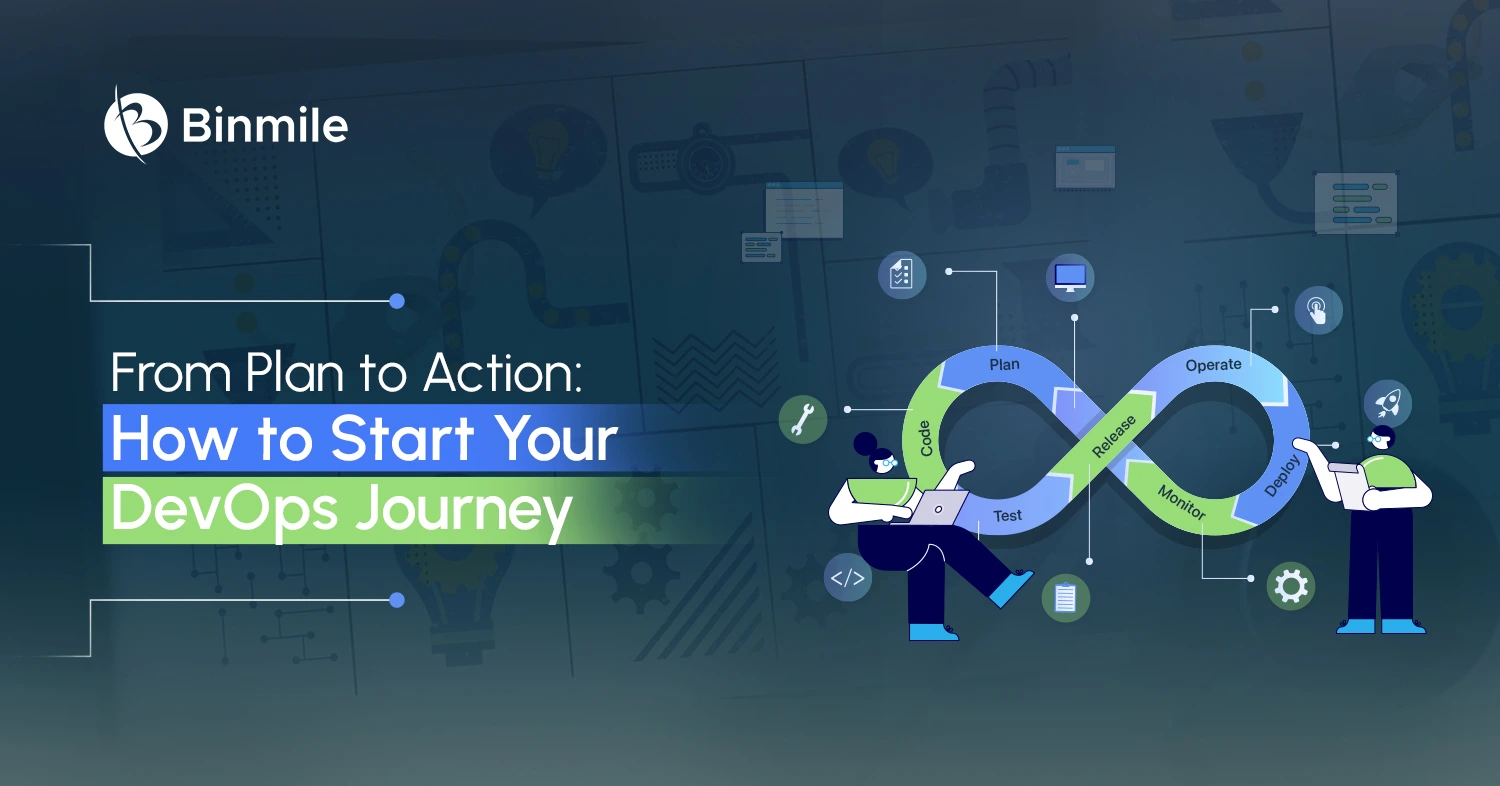Imagine this, you check the dashboard in the morning and see a new release went live without a hitch. Overnight, the build ran, all tests passed, the code was deployed, user metrics were tracked, and if an error occurred, the system automatically rolled it back and ran a new iteration. All of this happened before you even had your first coffee. This is what CI/CA (Continuous Integration meets Continuous Autonomy) looks like. It’s software excellence, isn’t it?
It doesn’t involve late-night firefighting sessions; no one is waiting for approval, and no endless Slack threads are asking, “Who broke the build?” What feels like the future is already happening today. It’s about a system that builds, tests, deploys, and fixes itself without waiting for human intervention. If this sounds interesting to you, wait till you reach the end of the blog. But before we delve into why CI/CA is so great, let’s look at why we needed it in the first place.
Why a Move Beyond CI/CD Became Necessary?
Over the last 10 years, CI/CD (Continuous Integration and Continuous Delivery) has transformed the way software is built and released. What once took hours or days of manual effort is now handled by automated pipelines.
- Builds are automated.
- Tests are automated.
- Deployments are automated.
This was a big leap forward. But here’s the catch: despite all this progress, the most critical decisions, involving approvals, rollbacks, and final go-live calls, are still made by humans. And that human dependency has created a hidden drag in delivery cycles.
To put this into perspective, research proves this. In open-source Travis CI projects, 85% of builds were recorded as broken and took more than four days to fix. Another study found that when builds failed and needed manual restarts, the time to merge pull requests doubled.
Even Gartner agrees that automation can improve product quality by up to 60%. But after a point, the benefits stop growing because human involvement still slows things down. So, while CI/CD did a brilliant job of automating the steps of software delivery, it never really automated the outcomes. And that gap is exactly where CI/CD goes out and CI/CA takes its place.
Beyond CI/CD: Embracing CI/CA for the Future of Software Delivery
Think of CI/CA as the self-driving car version of CI/CD.

Instead of automation being an assistant, it becomes the driver, making decisions, acting on them, and learning from the results. Here’s what changes:
1. Pipelines Finally Untangled
In traditional CI/CD, integration, testing, and deployment all run through the same pipeline. This means if you change one part, the whole process can become unstable. With CI/CA, the pipeline is split into two parts:
- Build Pipeline (CI): Creates a complete, versioned package that includes code, configurations, SBOM, and deployment scripts.
- Release Pipeline (CA): Takes care of deployments, checks/verifications, and rollbacks, powered by AI agents.
By keeping these pipelines separate, the system becomes less fragile and allows each part to improve on its own without breaking the other.
2. Agents That Think Like Teammates
CI/CA uses AI-powered QA agents that don’t just run tasks; they actually make decisions, just like a teammate would.
- Approval Agents check code quality, test coverage, and system health before allowing a release to move forward.
- Rollback Agents watch for unusual issues like spikes in latency or errors and instantly roll back if needed.
- Observation Agents keep track of performance after a release and share insights back into the system.
- Optimization Agents fine-tune rollout strategies. For example, starting with a small canary release before rolling out to everyone.
Point to note here is, the goal isn’t to replace engineers. It’s to take away repetitive decision-making, so engineers can spend more time on what really matters. And, what really matters is design, architecture, and innovation.
3. Environments With Brains
Now, think of environments in CI/CD as lifeless templates. In CI/CA, they gain a “brain”. This brain is able to monitor, adapt, and act on their own. They move through stages like Render → Deploy → Verify → Report
- In staging, AI agents run load tests, inject synthetic monitoring, and check security.
- In production, they adjust rollouts based on real user metrics.
During every phase, the system captures complete logs, health checks, and rollback history making environments smarter and more reliable.
| Aspect | CI/CD (Continuous Integration/Continuous Delivery) | CI/CA (Continuous Integration/Continuous Automation) |
|---|---|---|
| Core Philosophy | Automation acts as an assistant, handling manual tasks. | Automation acts as the driver, making and acting on decisions. |
| Pipeline Structure | A single, unified pipeline for builds, tests, and deployments. | Separated into two pipelines: a Build Pipeline (CI) and a Release Pipeline (CA). |
| Decision-Making | Critical decisions (approvals, rollbacks) are made by humans. | AI-powered agents make repetitive decisions based on data. |
| Examples of Automation | Automated builds, tests, and deployments. | Automated approvals, rollbacks, observation, and optimization. |
| Environment Intelligence | Environments are “lifeless templates” that follow predefined steps. | Environments have a “brain” and can monitor, adapt, and act on their own. |
| Goal | To automate manual steps in the software delivery process. | To automate the outcomes of software delivery and free up engineers. |
Why is the Shift Happening Now?
The rise of CI/CA is becoming a must and it is no longer just another buzzword. And there are 3 big reasons why:
- Speed of Releases: Top teams now deploy 973 times more often than low performers (State of DevOps, 2023). There’s no way manual approvals or checks can keep up with that. Without autonomy, this kind of speed simply can’t be sustained.
- Complexity of Cloud: With multi-cloud and Kubernetes, deployments have become far too complex for manual handling. Every environment is different, and only intelligent agents can make the right decisions quickly.
- Cost of Downtime: Gartner says downtime costs $5,600 per minute. In such cases, waiting for a human to react is too slow. Automatic rollback is not essential and isn’t a nice extra anymore.
CI/CD helped automate steps. But CI/CA takes it further. It makes sure the outcomes are owned. And in today’s tech, that’s the standalone point.
How to Optimize Software Release Pipelines with Continuous Automation
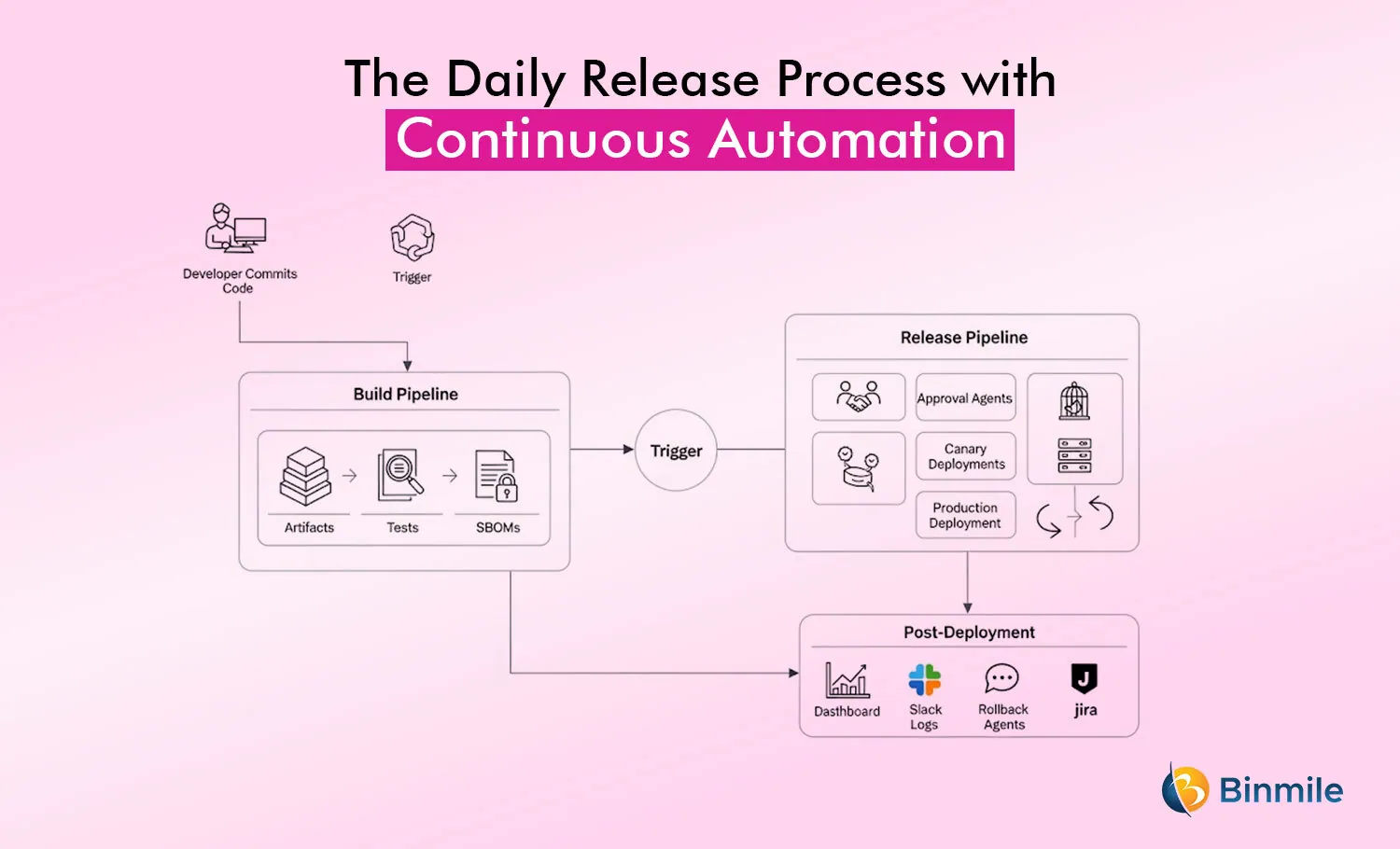
Here’s how a release cycle flows under CI/CA:
- Morning: A developer commits code.
- Build Pipeline: The system creates artifact bundles, runs tests, and generates SBOMs.
- Trigger: If the build succeeds, the Release Pipeline starts automatically.
- Release Pipeline: Approval Agents check quality gates, Canary deployments run in staging, If all goes well, production deployment begins.
- Post-Deployment: Logs are monitored, and Rollback Agents quickly reverse changes if problems appear.
- End of Day: Reports are sent automatically to dashboards, Slack, and Jira.
The result? No more manual handoffs, and far fewer firefighting sessions.
Humans + AI in CI/CA: Building Smarter Collaborative Workflows
One common worry about CI/CA is that people will lose control. But the truth is different, humans are not replaced, they are elevated.
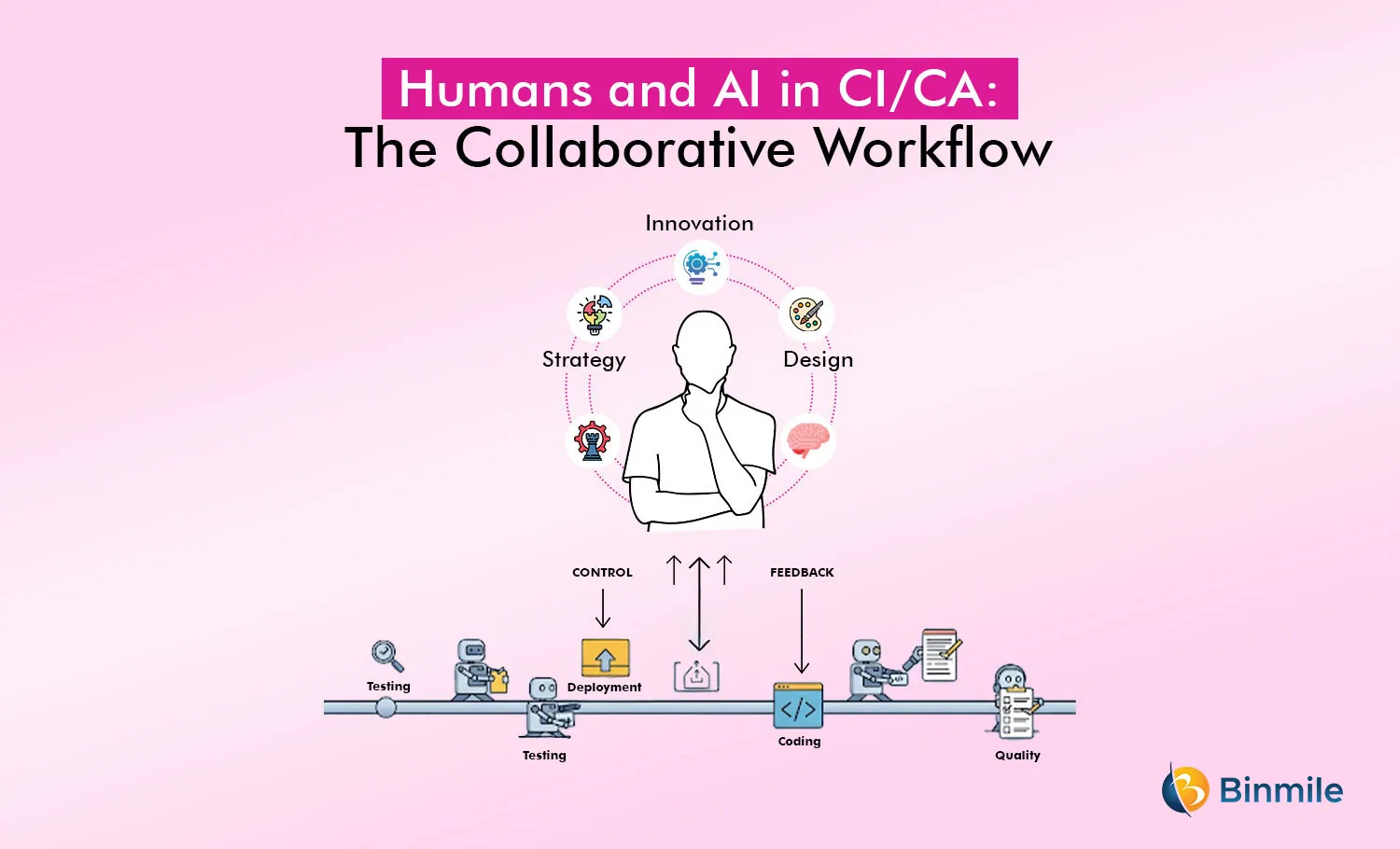
Here’s how it works in 3 ways:
- Engineers set the guardrails: they get to decide what’s allowed and what’s not.
- Teams define security and quality rules: so the system knows how to check every build.
- Agents handle the repetitive work: running builds, verifying results, and rolling back as and when problems appear.
According to Accenture (Tech Vision 2024), by 2026 nearly 40% of DevOps workflows will be fully autonomous. Humans will step in only for complex or high-risk cases where judgment and creativity are needed.
This shift doesn’t reduce the importance of humans, it makes their role more valuable. Instead of spending time babysitting pipelines or restarting failed builds, teams can focus on bigger goals. Improving design, building new features, strengthening architecture, and driving innovation, all of it. So you see, CI/CA doesn’t take control away. It gives you the freedom to focus on the work that really matters.
Are There Any First-Mover Advantages?
Yes, teams who adopt CI/CA early will see clear benefits.
- Faster shipping with minimal delays and bottlenecks.
- Fewer incidents thanks to instant, automated rollbacks.
- Easier scaling through modular pipeline design.
- Lower costs by preventing expensive downtime.
Most importantly, they’ll stand out as pioneers in autonomous delivery. This’ll build trust on one hand, and on the other hand, also attract top engineering talent.
The Final Reflection
The shift from CI/CD to CI/CA has already started. AI QA agents are proving they can manage approvals, monitoring, and releases. While humans still set the guardrails and stay in control. At Binmile, we go beyond automating pipelines. We help businesses autonomize them. With our expertise in DevOps, QA automation, and cloud engineering, we design modular, AI-ready pipelines that cut downtime, remove bottlenecks, and accelerate delivery.
So why settle for automation when autonomy is within reach? Let’s build the future together!
